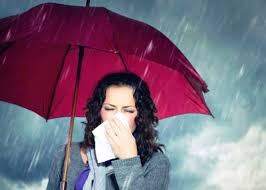Commonest Monsoon Illnesses and Prevention
After an especially hot summer with higher-than-average temperatures throughout the nation, the much-delayed rains were a pleasant reprieve for the populace. Particularly in those regions where the monsoon has surpassed seasonal precipitation patterns and flooding is being recorded throughout numerous states and cities, the respite only seems to last for a short while.
Due to water stagnation, even typical monsoons provide moist and humid circumstances that are perfect breeding grounds for bacteria and vectors that host illnesses. Floods and higher-than-average rainfall do substantially enhance the risk of many water-borne diseases. Hospitals and clinics have reported up to a 50% increase in visitors when it rains.
Malaria, dengue, leptospirosis, typhoid, respiratory infections, and severe gastroenteritis are a few of the monsoon illnesses that are often seen.
Malaria is the most frequent illness detected during the monsoon season, according to Dr. Vikram Vora, Medical Director for the Indian Subcontinent, International SOS. Bite wounds from infected mosquitoes, which spawn in standing water, cause transmission. Dengue is another mosquito-borne illness that is spreading geographically every year. It causes excruciating joint and muscle pain in addition to a high temperature. Malaria and dengue are easily prevented, but mosquito nets, repellent creams, lotions, and electric anti-mosquito devices must be used. It is advised that everyone dress in long sleeves and long pants. Reducing children’s exposure to water sources is necessary for their protection. The single most crucial preventative action is the removal of breeding sites such water storage containers that have stagnant water.
People run the danger of contracting leptospirosis if they go through floods. This is a bacterial illness that may spread when a person comes into touch with an animal whose pee has the infection since the bacterium can live for many weeks in animal urine. Jaundice, a high temperature, and headaches are among the symptoms. Serious consequences including renal and liver failure might result from this. even death from meningitis. One must avoid going in flooded regions without high gum boots to avoid being infected. It’s also critical to keep living environments clean and hygienic, says Dr. Vora.
Because of inadequate sanitation and hygiene standards, typhoid fever cases are also known to increase around this season. Typhoid is a bacterial illness brought on by drinking or eating tainted food. Typhoid may be avoided by guaranteeing the availability of clean, drinkable water, avoiding street food sellers, following excellent handwashing habits, and keeping adequate food hygiene, according to Dr. Vora.
During and after the monsoon season, respiratory diseases such the common cold, cough, and influenza are prevalent. This is because there are conducive circumstances for the development of bacteria, viruses, and even fungi. Keeping oneself clean, routinely washing and sanitizing one’s hands, and using a mask while ill (or in touch with someone who is sick) may all assist one from contracting an infection. “A flu vaccine that can prevent and reduce the severity of the infection is available and is recommended especially for vulnerable groups, viz. children, the elderly, those with co-morbid conditions, or those with a compromised immune response,” claims Dr. Vora.
An infection in the digestive system causes acute gastroenteritis, or gastro as it is sometimes known. Doctors see a noticeable rise in cases during monsoon season because of diseases including salmonella enterica, rotaviruses, and E. coli, which are common and damage fish, poultry, and animals. When ingested with contaminated food products, the toxins in these bacteria may cause nausea, diarrhoea, persistent vomiting, and stomach discomfort. Eat prepared food while it’s still hot, use clean water when cooking, and thoroughly wash your produce and meat to avoid gastroenteritis attacks.
Although it may seem straightforward, preventing monsoon illnesses requires a strategy that involves raising awareness, coordinating efforts between citizens and health officials, repeatedly reinforcing messages about cleanliness, and prudent use of preventative measures. Only then can we hope to reduce diseases and their negative effects on health and productivity,” concludes Dr. Vora.







